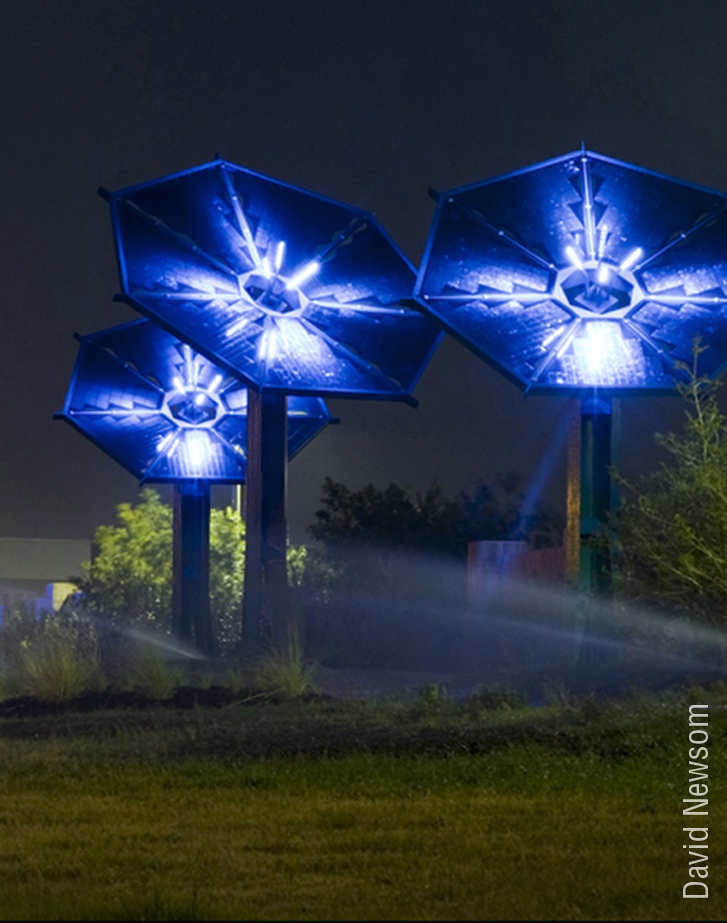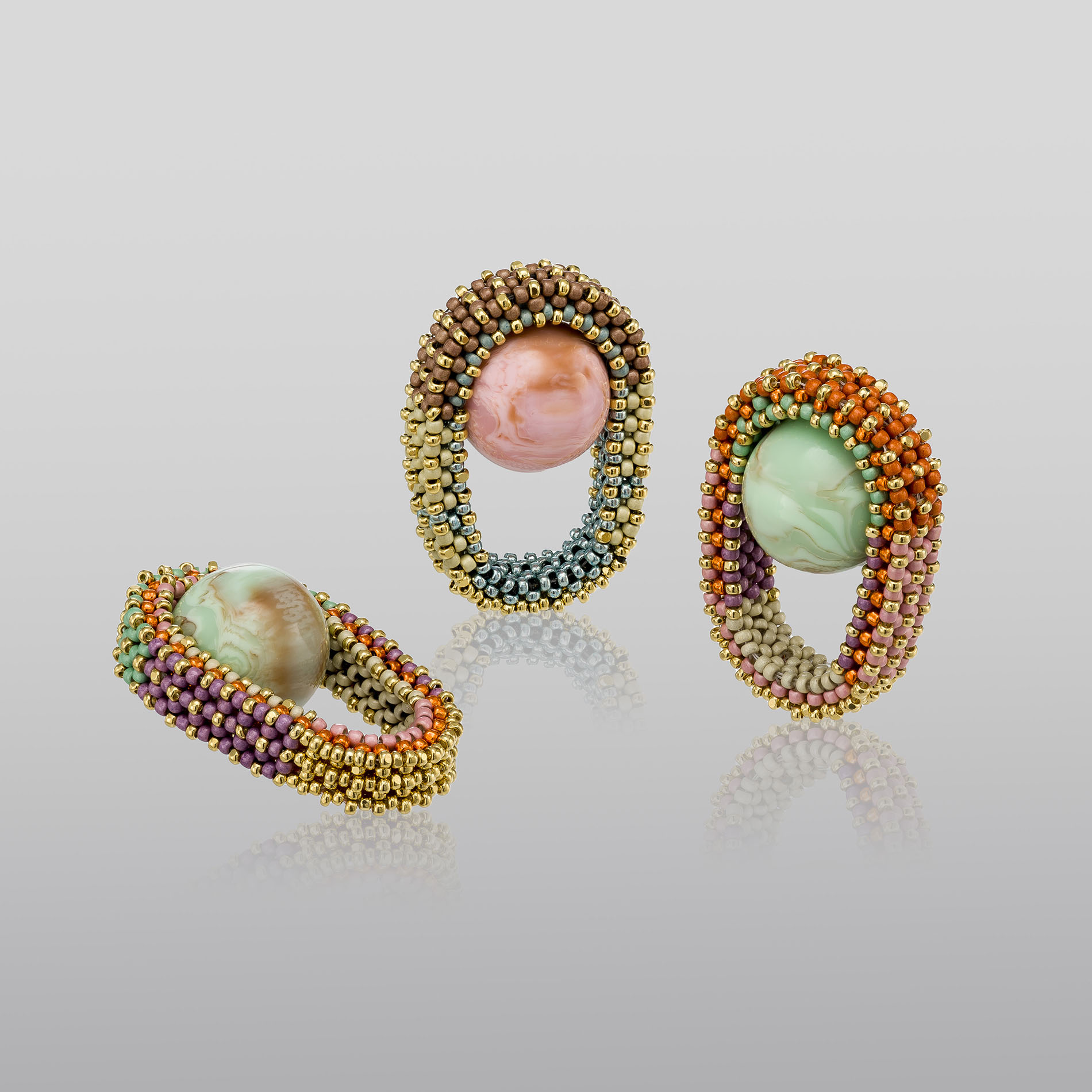Through Jan. 20, 2019, the Hudson River Museum in Yonkers, NY is hosting a groundbreaking exhibition of twelve of Maya Lin’s new and site-specific artworks. Entitled A River Is A Drawing, the exhibition continues and significantly enlarges upon the artist’s decade-long exploration of rivers as the “lifeblood” of our civilization.
Like Lin’s earlier works, the new exhibition reflects the artist’s interest in “pouring over maps,” reflecting upon nature’s art, “finding the poetry in the scientific data,” and then “drawing in 3-D.” Indeed, some of the newer works share materials and techniques – for example, sculpting with glass marbles or stainless steel pins – used in earlier installations, such as Lin’s Folding the Chesapeake (designed for the Smithsonian Renwick Gallery’s Wonder exhibition) and Pin River Sandy (which explored Hurricane Sandy’s impact on lower Manhattan).
An exciting new direction is the artist’s focus on one specific river – namely, the Hudson. The opportunity to create multiple works focused on a single river and to show those works in a museum atop that river’s scenic banks made this project “irresistible” to the artist. “I have never explored the same river in varied mediums at one time the way I plan to at the Hudson River Museum,” Lin remarked at the outset. “[Each work] is a unique drawing, and each one offers a different way in which the body will interact with the form,” she adds.
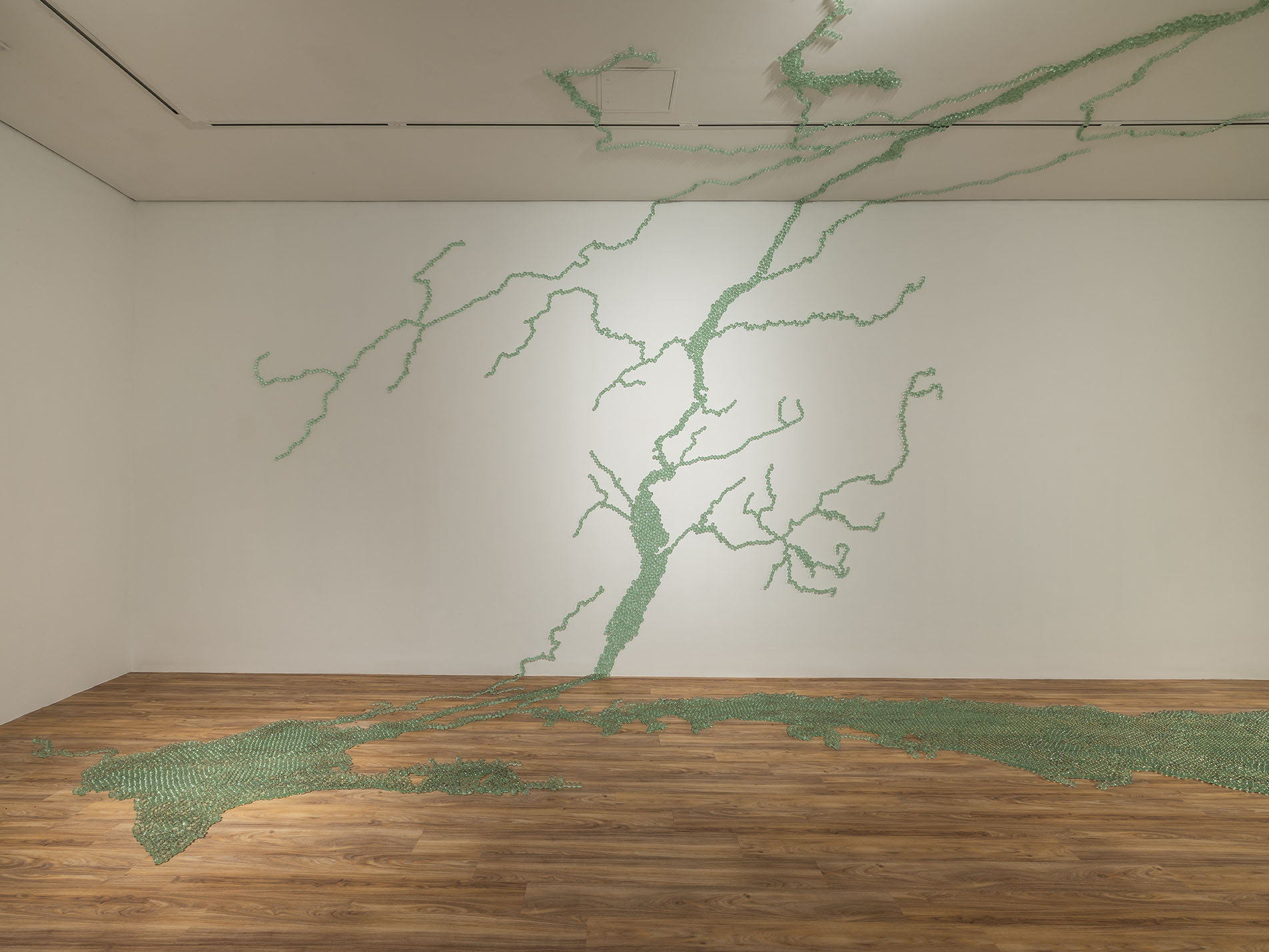
Maya Lin, Folding the Hudson (2018). Glass marbles, adhesive. Dimensions: 11’ x 20’3” x 35’6.” ©Lin, 2018. Courtesy of the artist and Hudson River Museum. Photograph by Kris Graves.
In Folding the Hudson (above), Lin used approximately 22,000 recycled pale blue-green glass marbles to convey the immensity, shape and grandeur of the Hudson River basin. A mass of marbles, representing the river’s mouth, pools on the gallery floor and visually anchors the composition. Defying gravity, the mass spreads up the wall, across the gallery ceiling, down the facing wall, and ends in a trickle across the floor, revealing the impressive length of the river and its significant tributaries.
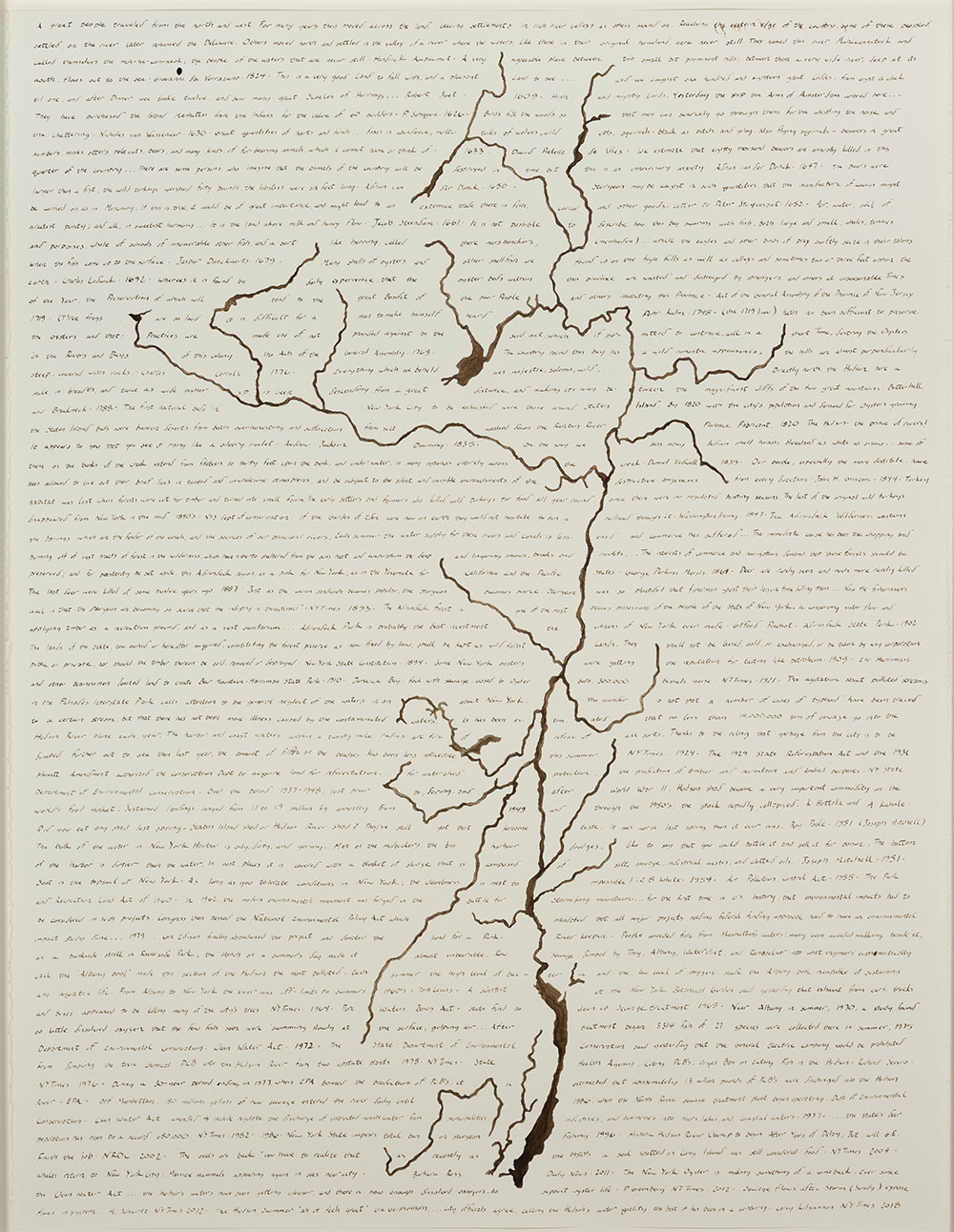
Map of Memory, Hudson River (2018). Graphite and walnut ink on paper. ©Lin, 2018. Courtesy of the artist and Hudson River Museum. Photography by Kris Graves.
Each work invites viewers to ponder the river from a different perspective. Silver Hudson, a recycled silver sculpture, highlights the river’s beauty and fragility. (See our earlier article on this sculpture.) Map of Memory (above) offers a chronological look at human influence on the river: a timeline of notable events forms the backdrop for a delicate ink drawing of the river.
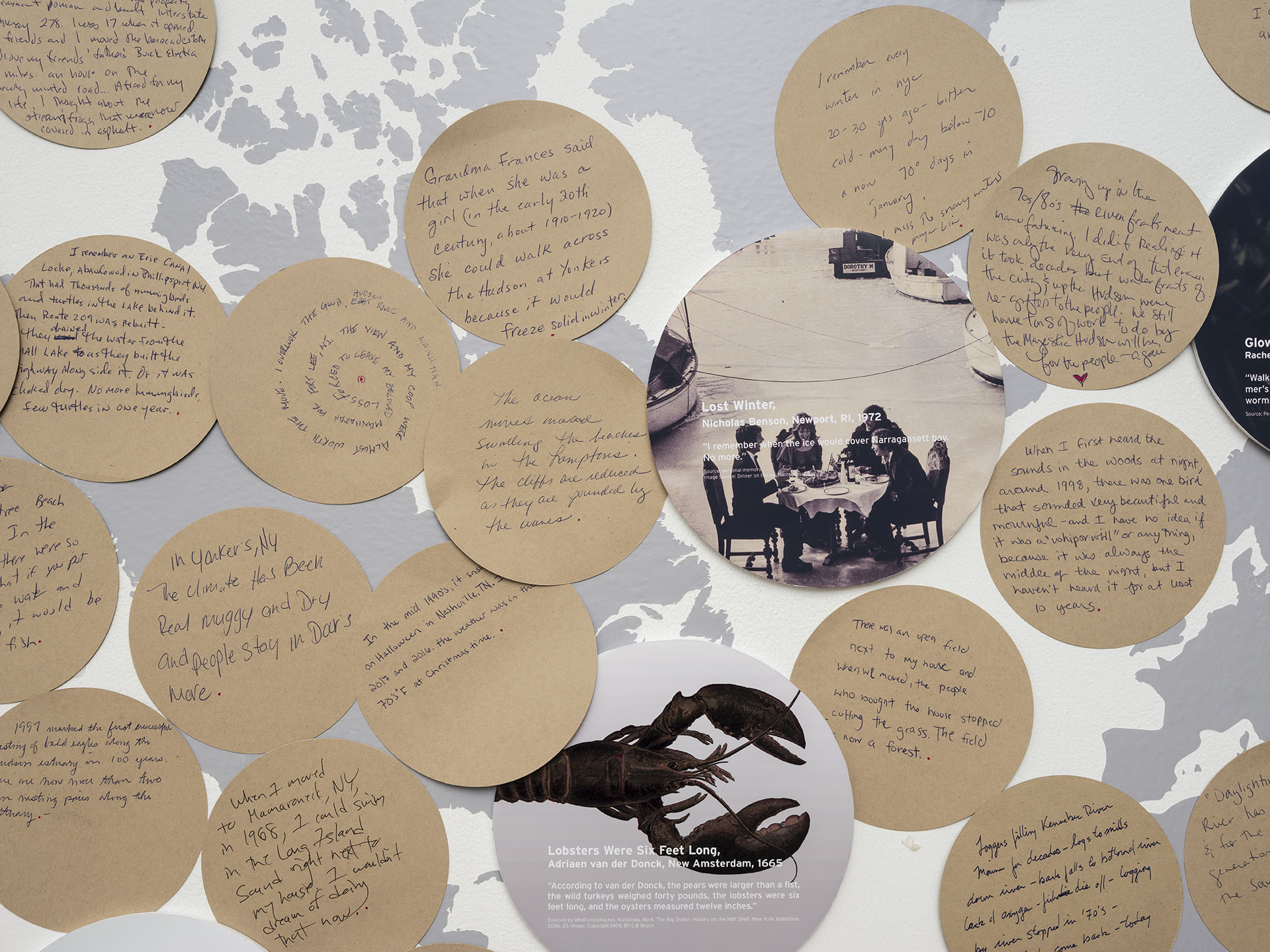
What Is Missing? (detail). Interactive submission alcove. ©Lin, 2018. Courtesy of the artist and the What Is Missing? Foundation. Photograph by Kris Graves.
A participatory, newly-created component of What Is Missing?, Lin’s interactive digital art and environmental advocacy project, draws upon all the artworks. Through text and images, she poses provocative questions: “What if we rethought how we spend our money?” “What if we subsidized good practices rather than bad?” “What if we ate lower down the food chain?” “What if you gave half your yard back to nature?” An interactive map invites viewers to contribute personal memories of how the river has changed over time.
The exhibition forms a powerful tribute to the river, encouraging us to look at it more closely and appreciate its wonders more keenly — now, before runaway climate change can alter it indelibly. Though urgency impels these works, they nonetheless evince calm strength, summoning our thoughtfulness, courage and resolve. Referencing two starkly different potential futures depending upon climate action or inaction, the artist simply states: “The choice is yours.” And building that awareness is a valuable, enduring contribution to the river itself.

